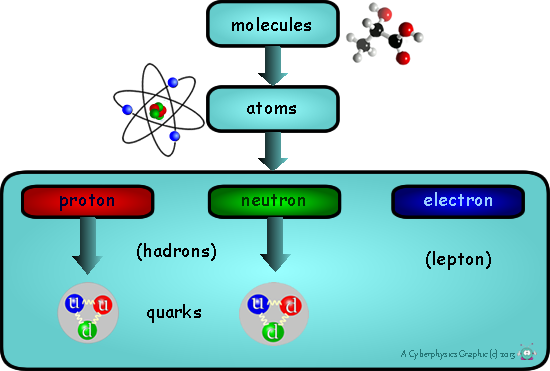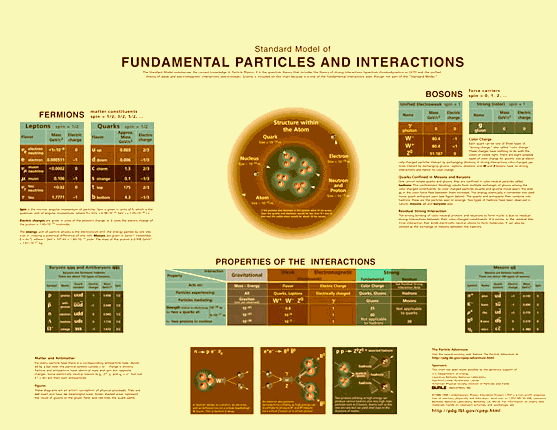Fundamental Particles A fundamental particle cannot be broken down into anything simpler. The Greeks philosophised that if you take an object and break it into two pieces, then take one of the halves and halve that and so on.. you would eventually get to a point where the object would not divide any further (Greek - atom (indivisible)). It was thought that each substance had its own fundamental particle. The universe could then be thought of as composed of millions of different 'matter building bricks'! One for water one for salt, one for gold, one for grass etc.. We now know that substances such as gold are made up of atoms but substances such as water are made up of individual units called molecules that it is possible to break down into smaller components - atoms. Grass is living matter. It is made up of complex and simple molecules associated into vast biological units called cells... but all of these could be broken down into atoms too. The atoms matter is made up of is listed in the Periodic Table. We therefore have a set of just over 90 'matter building bricks' that all of the matter in the universe could be considered to be made of! By the end of your GCSE you were aware of the fact that atoms can be thought of as composed of protons, neutrons and electrons. The number of protons in the nucleus determining which atom we are dealing with, the number of neutrons telling us which isotope of that atom and the number of electrons orbiting the atom determining whether the atom was indeed a neutral atom or an ion. Our 'matter building brick' set is now much simpler... from only three different types of 'brick' we could make anything - a Lego set for God!

BUT we now know this is not the solution to the fundamental particle puzzle..although electrons have not yet been broken down into anything simpler, protons and neutrons can be broken down into quarks. This is the currently held view of matter - but it is being disputed and refined and at University level you will learn of its limitations and the suggestions as to how it should be amended - Remember we only have a 'model' of how things work - NOT the absolute truth - we seek to get a clearer picture, a better understanding of how the Universe works! (For the latest interactive version of this click on the image and go to particle adventure!)
Hadrons and LeptonsWe now have two sets of sub-atomic particles:
Particle physics involves the study of these and their interactions. |
Follow me...
|






